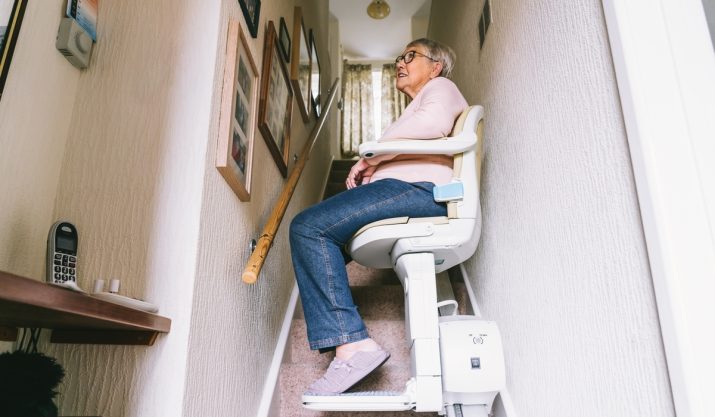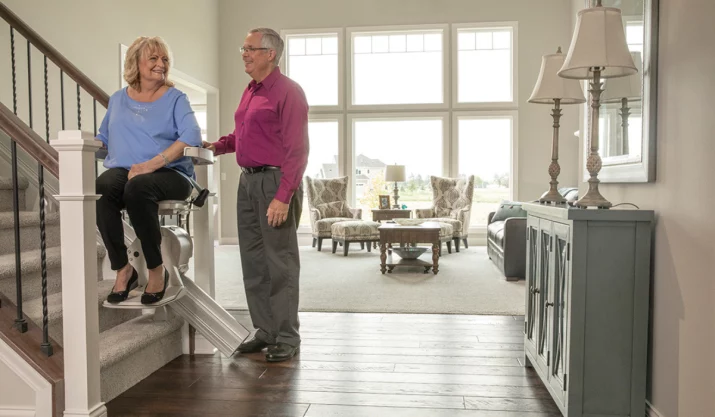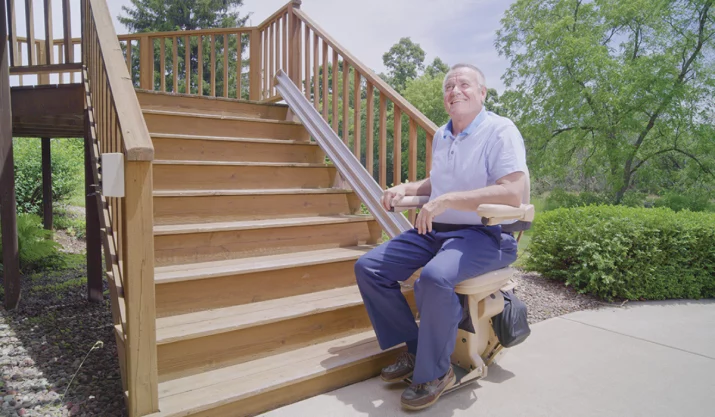How Much Does a Vertical Platform Lift Cost?

Table of Contents
Are you or your loved ones facing mobility challenges and seeking a solution to improve accessibility at home? This blog post will discuss the key factors influencing pricing, explore average price ranges, and provide insight into maintenance costs and financing options.
Key Takeaways
● Vertical platform lifts improve accessibility for individuals with mobility challenges through a motorized system, sturdy platform, and safety features.
● Factors such as size, weight requirements, height, customization options, and safety features influence the cost of vertical platform lifts.
● Average prices for vertical platform lifts range from $8,000 to $18,000 or more.
What Is a Vertical Platform Lift?
A vertical platform lift, a.k.a. a wheelchair lift or VPL, is a specialized device designed to improve accessibility for individuals with mobility challenges. It provides a practical solution for navigating vertical spaces, such as staircases or raised platforms, allowing seamless movement within homes and other environments. For example, a porch lift acts as an elevator-like solution to avoid stairs and reach your deck.
A vertical platform lift features a sturdy platform with safety features like guardrails and non-slip surfaces. It offers user-friendly controls for easy operation and can accommodate wheelchairs or mobility devices. Some models also include battery backup functionality for uninterrupted operation during power outages.
In commercial settings, vertical wheelchair lifts are commonly used for enhanced accessibility. They serve as reliable transportation between floors, catering to diverse mobility needs, including highlander and scooter users. They are designed for weather resistance and provide reliable and convenient accessibility solutions for individuals with mobility challenges.
Factors That Might Impact Cost
1. Size and Weight Requirements: Larger lifts that accommodate heavier wheelchairs or mobility devices may have higher price tags due to their
enhanced capabilities and structural requirements. For instance, a home elevator with a larger platform size and higher weight capacity may incur additional costs.
2. Height and Vertical Travel Distance: Lifts designed for multiple floors or taller structures, such as residential elevators with hoistways, may require extended lifting mechanisms or reinforced construction, leading to increased pricing.
3. Customization Options: Vertical platform lifts offer various customization options to meet individual needs and preferences. These can include platform size adjustments, specific finishes or colors, and additional features like folding ramps or handrails. Customizations may incur additional costs, but they allow you to tailor the lift to your requirements.
4. Safety Features: Safety is paramount in vertical platform lifts, particularly in commercial settings. Advanced safety features such as ADA-compliant landing gates, wheelchair elevators with landing gates, obstacle sensors, and unenclosed lifts contribute to the overall cost.
Average Price Range for Vertical Platform Lifts
While prices can vary based on factors such as size, features, and customization, here is a general overview to provide you with an estimate:
● The average price range for vertical platform lifts typically starts around $8,000 and can go up to $18,000 or more for residential models.
● Commercial-grade or specialized lifts may have higher price ranges depending on their specific requirements.
For instance, we offer residential vertical platform lifts with price ranges starting at approximately $8,000 for the base unit. These prices may increase based on additional features, customization options, and necessary modifications for specific installations.
Cost Breakdown
Understanding the cost breakdown of a vertical platform lift can give you a clearer idea of where the expenses lie. Here’s an analysis of the typical costs involved:
1. Base Unit: The base unit cost can range from $8,000 to $18,000, depending on the unit’s model and specifications.
2. Additional Features: Customization options such as platform size adjustments, folding ramps, or specific finishes may incur additional costs. These other features can add around $1,000 to $5,000 to the overall price, depending on the complexity and extent of customization.
3. Accessories: Optional accessories like handrails, remote controls, or safety enhancements can also contribute to the total cost. The cost of accessories typically ranges from $200 to $1,000.
Maintenance and Service Costs
Installation Costs
While installation costs can vary based on factors like the complexity of the installation, location, and any necessary modifications, it is advisable to budget approximately $1,000 to $3,000 for installation expenses. Working with experienced technicians or authorized dealers is vital to ensure a seamless and safe installation process.
Extended Warranties and Service Contracts
Extended warranties typically cover specific parts, components, and labor for an extended period beyond the standard warranty. The cost of extended warranties can range from $500 to $1,500, depending on the coverage and duration.
On the other hand, service contracts provide regular maintenance and repair services to keep the lift in optimal condition. The cost of service contracts can vary based on the required frequency and extent of service, ranging from $500 to $2,000 or more annually.
Financing and Funding Options
Investing in a vertical platform lift can be made more manageable through various financing and funding options. Explore the following avenues to find financial assistance for your accessibility solution:
1. Government Assistance Programs: Many government programs and agencies offer financial support to individuals with disabilities or seniors seeking to improve accessibility in their homes. These programs may provide grants, loans, or subsidies to help cover the costs of vertical platform lifts. Consider the Department of Veterans Affairs (VA) in the United States, which offers grants for qualifying veterans, and local agencies or departments dedicated to disability services.
2. Private Health Insurance: Insurance companies may consider lifts as durable medical equipment (DME) if they are deemed medically necessary. Review your insurance policy or contact your provider for coverage options and requirements.








